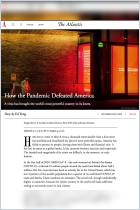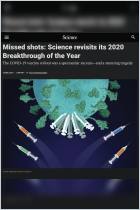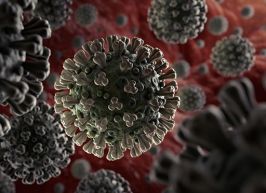As of late 2019, hardly any scientists studied COVID-19. Research had not isolated the disease or the coronavirus that causes it. By March 2020, COVID-19 had transformed into a full-blown pandemic afflicting close to a million people worldwide, and the world’s scientists reacted. In one of the great gear shifts in modern science history, the world’s scientists dropped everything and focused on COVID-19. In a way that resembles efforts on the Manhattan Project and the Apollo program, the coronavirus pandemic harnessed the world’s scientific energy and skill. Ed Yong, writing for The Atlantic, offers insight, reach and vision for scientists, doctors and public health professionals.
The COVID-19 pandemic spurred the largest scientific turnaround in history.
As recently as Fall 2019, no one knew anything about COVID-19 – including scientists. The coronavirus that causes COVID-19 – SARS-CoV-2 – was already spreading human-to-human, but science had not isolated or named it. Six months later, the situation was radically different. By April 2020, COVID-19 had transformed into a full-blown pandemic afflicting almost 200 countries and infecting hundreds of thousands of people.
COVID-19’s global spread spurred one of modern science’s greatest turnarounds. The world’s scientists stopped their usual work to focus on COVID-19 – a dramatic change of priorities. In less than a year, scientific journals published tens of thousands of articles related to COVID-19. The shift in focus and priorities – and the harnessing of scientific knowledge and energy – resembled similar immersive efforts in service of the Manhattan Project and the Apollo program.
Scientific efforts produced diagnostic tests and vaccine development...




















Comment on this summary or Comenzar discusión